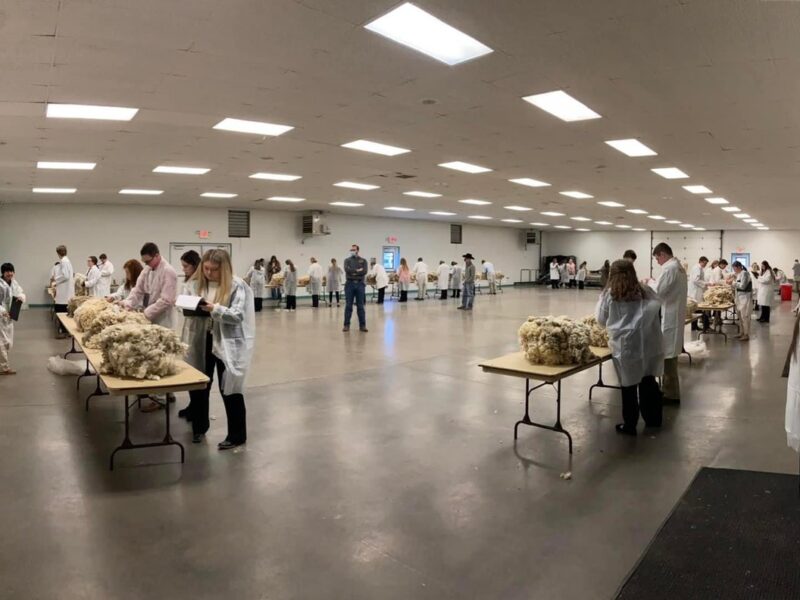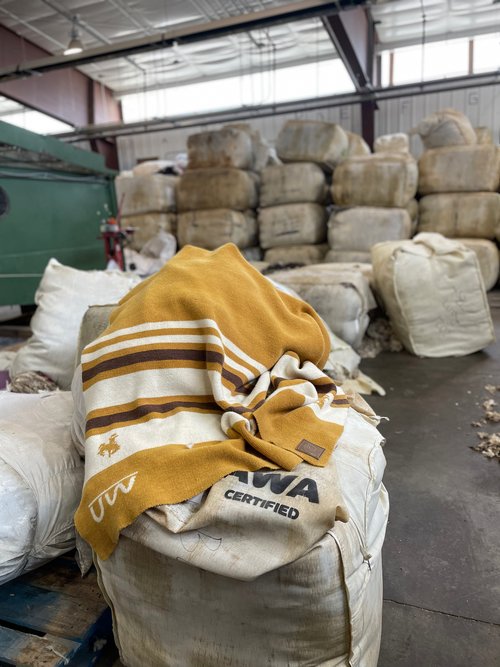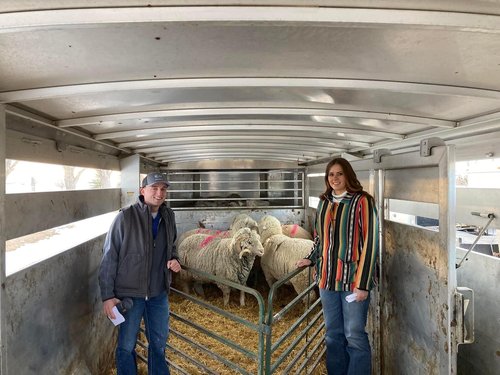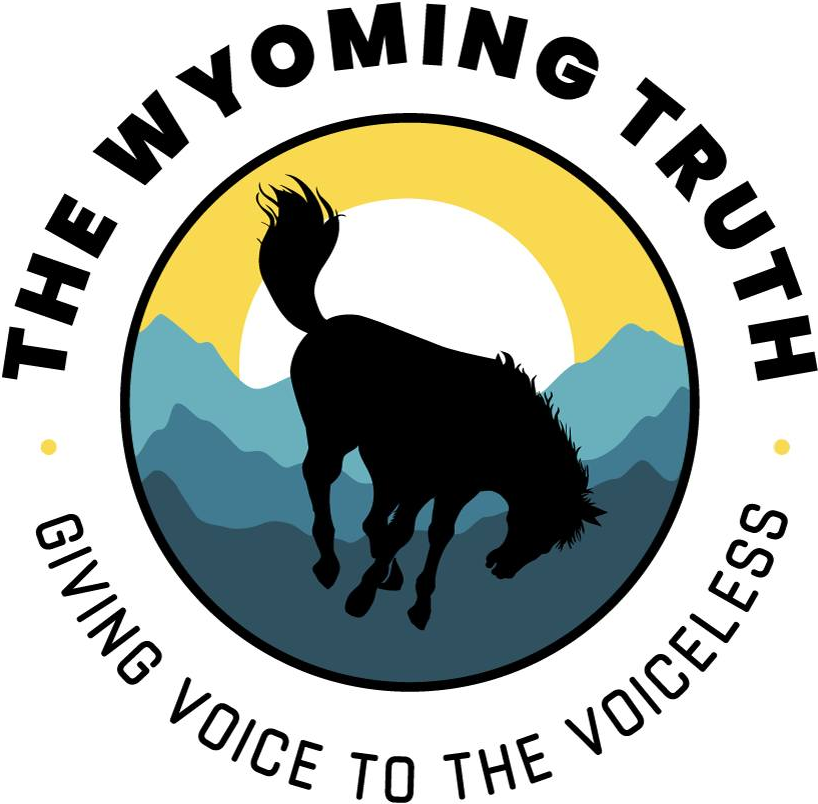University of Wyoming Looks to Past to Bring New Products to the Future
The Wyoming Wool Initiative builds upon the state’s production numbers
- Published In: Other News & Features
- Last Updated: Sep 24, 2022

University of Wyoming students work with sheep through the Wyoming Wool Initiative, which seeks to expand the state’s celebrated sheep and wool industry. (Courtesy photo from Wyoming Wool Initiative)
By Kristi Eaton
Special to the Wyoming Truth
A new initiative at the University of Wyoming seeks to expand the state’s celebrated sheep and wool industry.
In the 2017 Census of Agriculture, Wyoming ranked first in the nation in wool production with nearly 3 million pounds shorn. Wyoming currently ranks third behind Texas and California, according to the National Agricultural Statistics Service.
The Wyoming Wool Initiative launched in July 2022. It evolved from UW’s 2021 Blanket Project, which sold limited edition blankets made from the University’s sheep flock at Mountain Meadow Wool in Buffalo.

“[It is] an effort to fund specialized academic and hands-on experiences preparing students to enter the sheep and wool industry, as well as targeted programming, focused on improving production and marketing opportunities for producers,” Lindsay Conley-Stewart, project coordinator, told the Wyoming Truth.
She added, “We believe the Wyoming Wool Initiative represents Wyoming’s history, economy and future. The sheep and wool industry have historically been a significant player in Wyoming’s economy.”
In 1908, Wyoming led the nation in wool value and was home to 6 million head of sheep, valued at $32 million.
“That’s roughly $1 billion today,” Conley-Stewart said. “As we look to the future, we must understand the potential of the past. Innovations in the sheep and wool industry will allow Wyoming’s economy to expand in unique and sustainable ways.”
The wool initiative sells limited edition blankets through the campus bookstore for about $400, and it’s going a step further by using blockchain technology to document the stages of production. Blockchain is a digitized database that is shared and modified cryptographically to improve product traceability.
“We began this project with the goal of bringing more value back to the farm gate, so that producers can see the return on all of their hard work raising American lamb and wool,” Courtney Newman, a UW graduate student from Fort Collins, Colo., said in a statement.
Dates, details and processing information are recorded for each of the five stages of blanket production: shearing, first-stage processing, dyeing, spinning and knitting.

Another project of the Wool Initiative is Lamb-A-Year, a new program in which the public can donate lambs or money to the Wyoming Wool Initiative. Donated lambs will be part of a new course called “Introduction to the Lamb Feeding Industry.”
“Throughout this course, students will work with industry leaders and collect growth and carcass data on donated lambs,” said Conley-Stewart. “Dr. Whit Stewart will report data to participating producers. Students will gain industry experience by learning about finishing, processing and selling lambs.”
Proceeds from lamb sales and monetary donations support producer programming and education, industry-related research and development, specialized student programming and training to enter the sheep and wool industry, she added.
Additionally, the team is working with Mountain Meadow Wool on manufacturing high-performance socks.
Dylan Laverell, a graduate research assistant with the Wyoming Wool Initiative, is eager to participate in the project. After taking a course in wool evaluation, he went on to help out with the ram test and conduct undergraduate research at the Laramie Research and Extension Center.
“I am really excited to see the Wool Initiative come into fruition as I start my graduate career, a more formalized action and pathway for all things sheep at the University of Wyoming,” he said. “. . .. [Wool] represents a year’s cumulation of hard work, perseverance and sustainability that all range and flock-farm producers around the intermountain west strive for each year. We are able to reap the benefits of the shepherds by purchasing great wool products, like blankets, socks and mittens, just to name a few. These tangible products are beneficial teaching tools that all start out with harvesting a by-product of sheep production—raw wool.”












